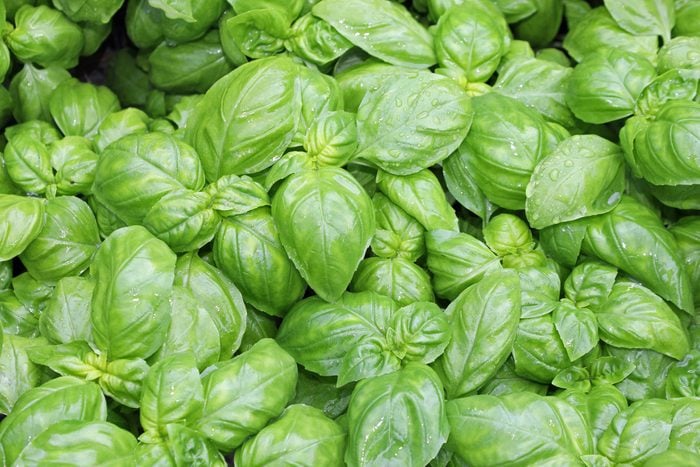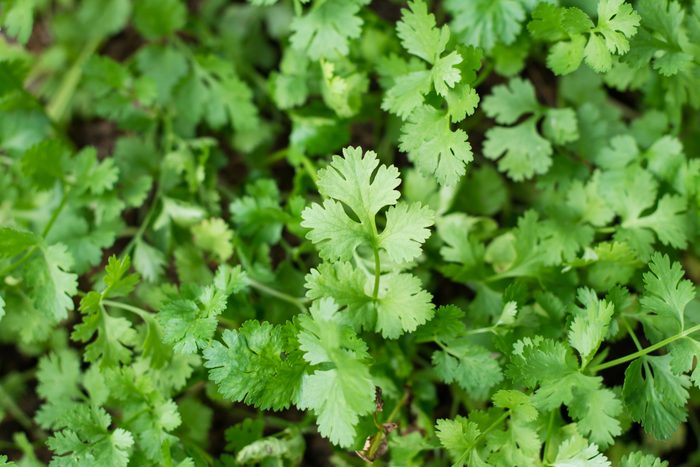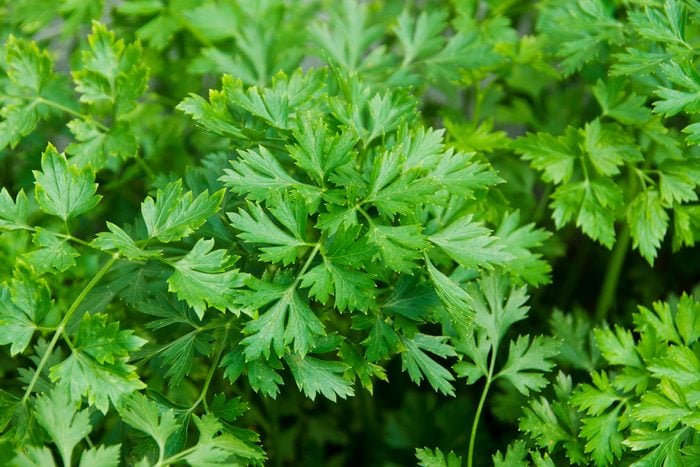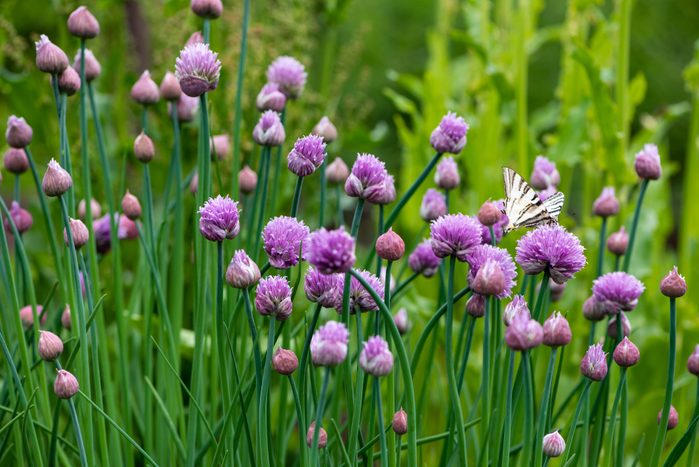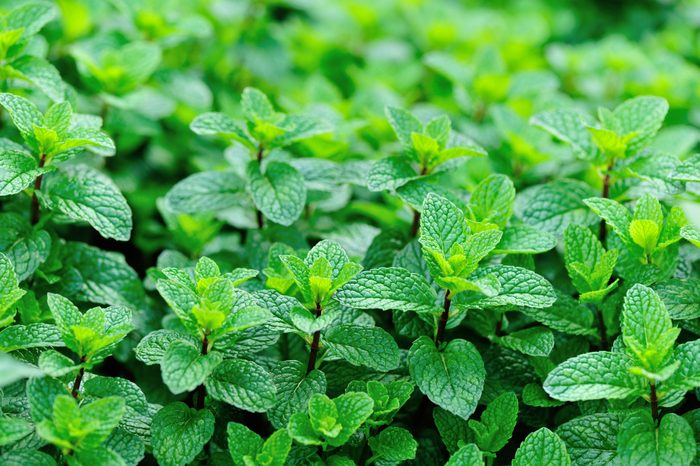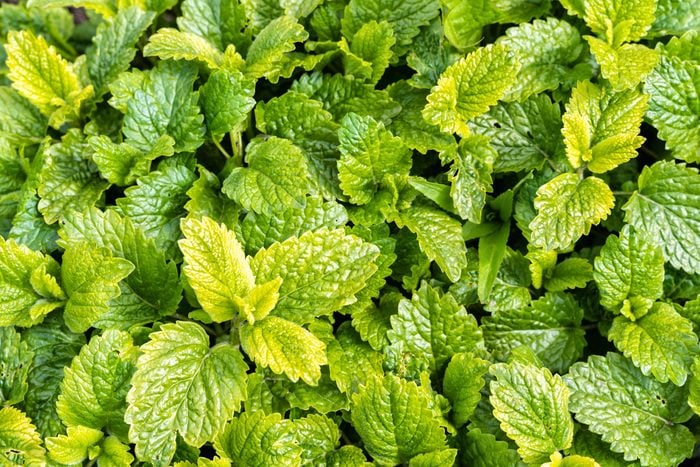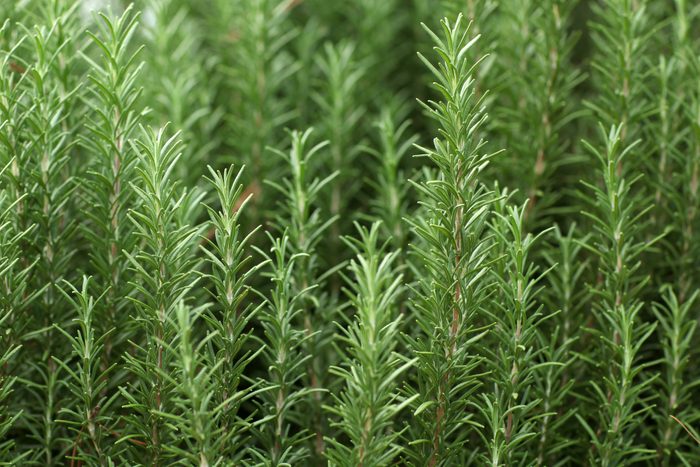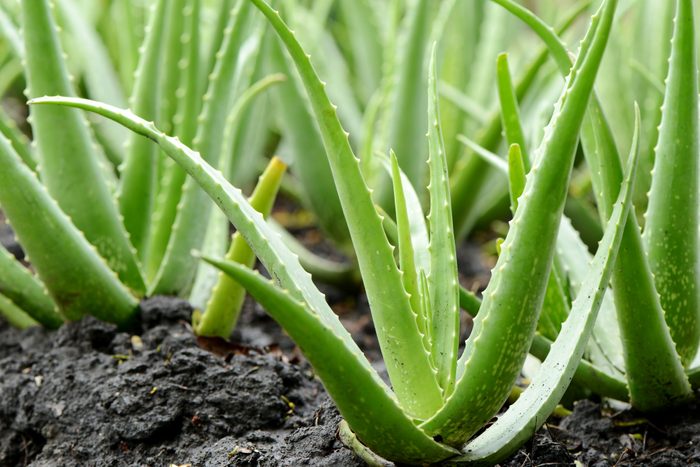Basil
You’ll find basil at or near the top of every list of easy-to-grow herbs. Start by sowing seeds directly in the pot. Cover with plastic wrap to keep them moist until they begin to germinate. Then remove the plastic and let a few seedlings grow to maturity.
Basil grows well near a sunny window or under grow lights. They can also be easily grown as microgreens.
Cilantro
If you love cilantro, you’ll enjoy growing it indoors. Sow a few seeds in a container and cover it with plastic wrap to keep the soil moist until the seeds germinate. Thin out seedlings when you see the first sets of true leaves so you have just a few plants growing in the pot.
Keep them watered, give them good light and harvest leaves before they turn feathery. Like basil, you can also grow cilantro as microgreens.
Looking for more ideas? Keep fresh herbs within reach with these beautiful and creative indoor herb garden ideas.
Parsley
Parsley is closely related to cilantro and grown in much the same way.
In a six- to eight-inch container, plant several seeds. When you see the first true leaves, thin to a few seedlings. Because it grows a long tap root, parsley will grow better in a deeper pot.
Give it plenty of light and keep it watered. Harvest leaves as needed but don’t cut too many off at one time. Always retain some leaves so the plant continues to grow.
Chives
If you grow chives in your garden, dig up a clump in the fall, pot them up and grow them indoors all winter. Or look for potted chives in the produce section of your grocery store.
Harvest by cutting off leaves at the base of the outside of the plant. In the spring, you can continue growing the chives outside in the pot or in the ground.
Dill
If you’ve planted dill outside, you know it can grow to four or five feet tall. It will stay much smaller in a container.
Start by sowing seeds in a container. You can harvest and use some of the seedlings as soon as they show their first leaves. Also allow some of the plants to continue growing. Like other indoor herbs, they need lots of light and even moisture. You can also grow them as microgreens.
Mint
Most types of mint can be grown indoors. Start with small plants started from divisions of mint grown outdoors, or buy a mint plant. Keep it well watered with plenty of light. Harvest leaves as needed.
In the spring, move your mint plant outdoors but keep it in a container. In the ground, it can be an aggressive plant that wants to take over your indoor herb garden.
Lemon Balm
Lemon balm with lemon-scented leaves also grows well indoors, where it can be kept in check by regularly pruning off the outer leaves.
Purchase a starter plant or take cuttings from a plant growing outdoors. Lemon balm is a perennial, so take it outdoors in the spring. You can divide it in the fall to make new plants to bring indoors.
Oregano
Several types — variegated, Greek or Mexican — will grow indoors with bright light. Most will tolerate dryness, too.
To ensure you get the oregano you want, start with divisions from a plant you have in your garden. Snip off leaves as needed. Like other perennial herbs, moving your oregano outdoors in the spring once your garden is frost-free will give it a boost. Take divisions in the fall to bring indoors.
Rosemary
Rosemary is easy to find in the stores in the wintertime, but admittedly can be tricky to keep growing. Start with a smaller plant and put it where it will receive lots of light. Water before the soil dries out completely and don’t let the plant sit in water. It likes humidity around it, so consider placing pots on trays of pebbles that are kept moist.
Aloe Vera
This is one of the easiest herbs to grow indoors. Purchase plants or get a division from a friend.
They like bright light but not direct sunlight, so try growing them near east- or west-facing windows. The gel of these plants is often an ingredient in products for chapped hands. To harvest, cut off outer leaves and split open to get to the gel inside.

